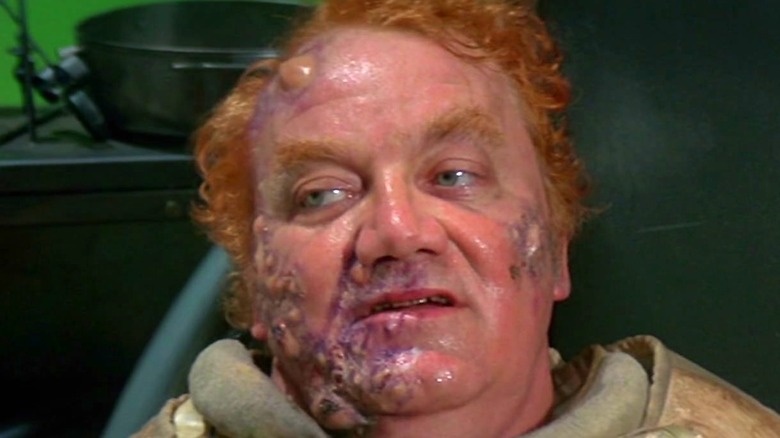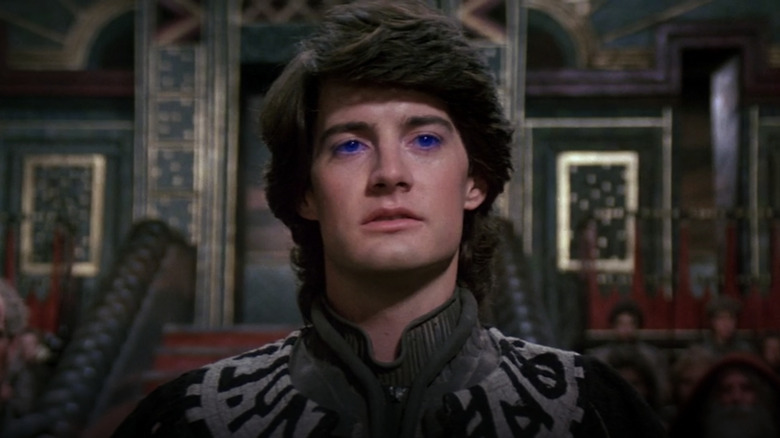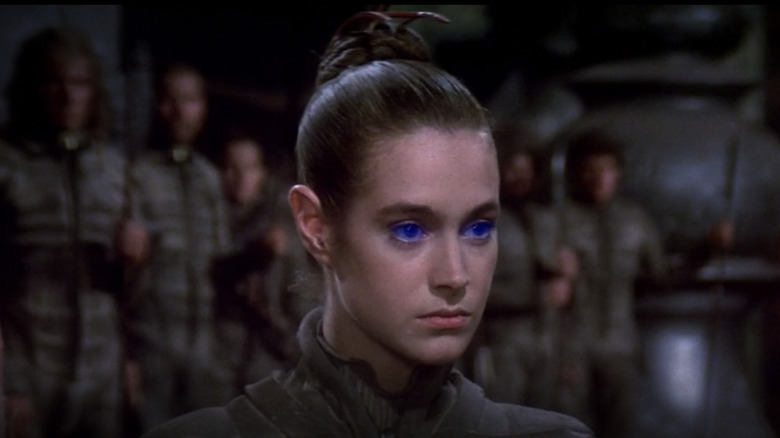The 1984 Dune Scene That Aged Poorly
Fans of Denis Villeneuve's "Dune" may be hard-pressed to find David Lynch's "Dune" worthwhile. The 1984 film was panned on release and was so traumatic for Lynch to make that he has since disavowed the project (per Extrovert Magazine). Of course, this didn't stop the director from working with "Dune" star Kyle MacLachlan in "Blue Velvet" and "Twin Peaks." But no one can blame Lynch for distancing himself from the first film. While the 1984 version of "Dune" attempts to stay true to the 400-page source material, there is a lot to get through. Villeneuve fixed this in his film by only addressing the first half of the book, while the rest will be included in the sequel. Alternatively, Lynch's "Dune" is rushed, with a confusing pace.
That said, the first version of "Dune" has its merits. The Atreides' love of pugs is difficult not to find charming (via Insider), and when looking at the film through the lens of any other David Lynch movie, its weirdness and surrealism is enjoyable. But even with those elements going for it, there is one particular scene in "Dune" that aged poorly.
Paul is not a white savior, he is a villain
There are many aspects of "Dune" that look uncomfortable to the modern eye. For example, in Frank Herbert's "Dune" books, The Baron is a monster and sexual abuser — although Lynch's version of Harkonnen veers into a caricature (per USA Today), which makes this easier to watch. But the main issue with Lynch's "Dune" is how it misses nuance. Many accuse Paul Atreides of being a white savior as he comes to the desert planet to free its people. Villeneuve has argued (per Insider) that viewing "Dune" under that scope is missing the point. Herbert wrote "Dune" as an indictment on this element exactly: Paul eventually becomes a power-hungry dictator. As Alissa Wilkinson points out in her article for Vox, Paul is responsible for the genocide of multiple planets and eradicating other religions throughout his reign. It is another example of how absolute power corrupts.
This is what makes Lynch's "Dune" feel so clumsy and is historically difficult to adapt, as noted by Time. At the end of the film, Paul does claim to be the Kwisatz Haderach, otherwise known as the messiah brought to Arrakis by the Bene Gesserit. This is not the point that veers from the source material. Paul's ultimate corruption is an important element to the story, but the native people of Arrakis — known as the Fremen — are significantly toned down.
The Fremen are disrespected in Dune
As Duke Leto says in Villueneve's "Dune," he wants to cultivate desert power. The Fremen are fierce people who prefer to live in the harsh environment of Arrakis. They implemented the stillsuits, the only equipment that allows humans to survive in the desert. However, Lynch's "Dune" glosses over the Fremen culture. In an interview with Deadline, Francesca Annis stated that there were additional issues with Lynch's film. Sean Young's portrayal of Chani is indicative of some of these issues. She is a supportive role to Paul, and essentially plays the role of the girlfriend archetype. This characterization spreads to the rest of the Fremen as well. This enduring culture that "fight like demons" in 2021's "Dune" are toothless in the original version.
This culminates in the final scene when Paul takes control over Arrakis and becomes the Hand of God. A concise voice-over from Princess Irulan explains Paul's smooth transition of power. As the Kwisatz Haderach, Paul makes it rain, and the movie ends abruptly. The Fremen are left without agency. They freely let an outsider take over their planet with no visible reaction. Chani and her people becomes faceless subjects to the new order. The Fremen appear to be nothing more than set pieces, present only to be ruled by Paul. The final scene reinforces the white savior trope with no room for interpretation and ultimately disrespects the Fremen as a separate culture.


